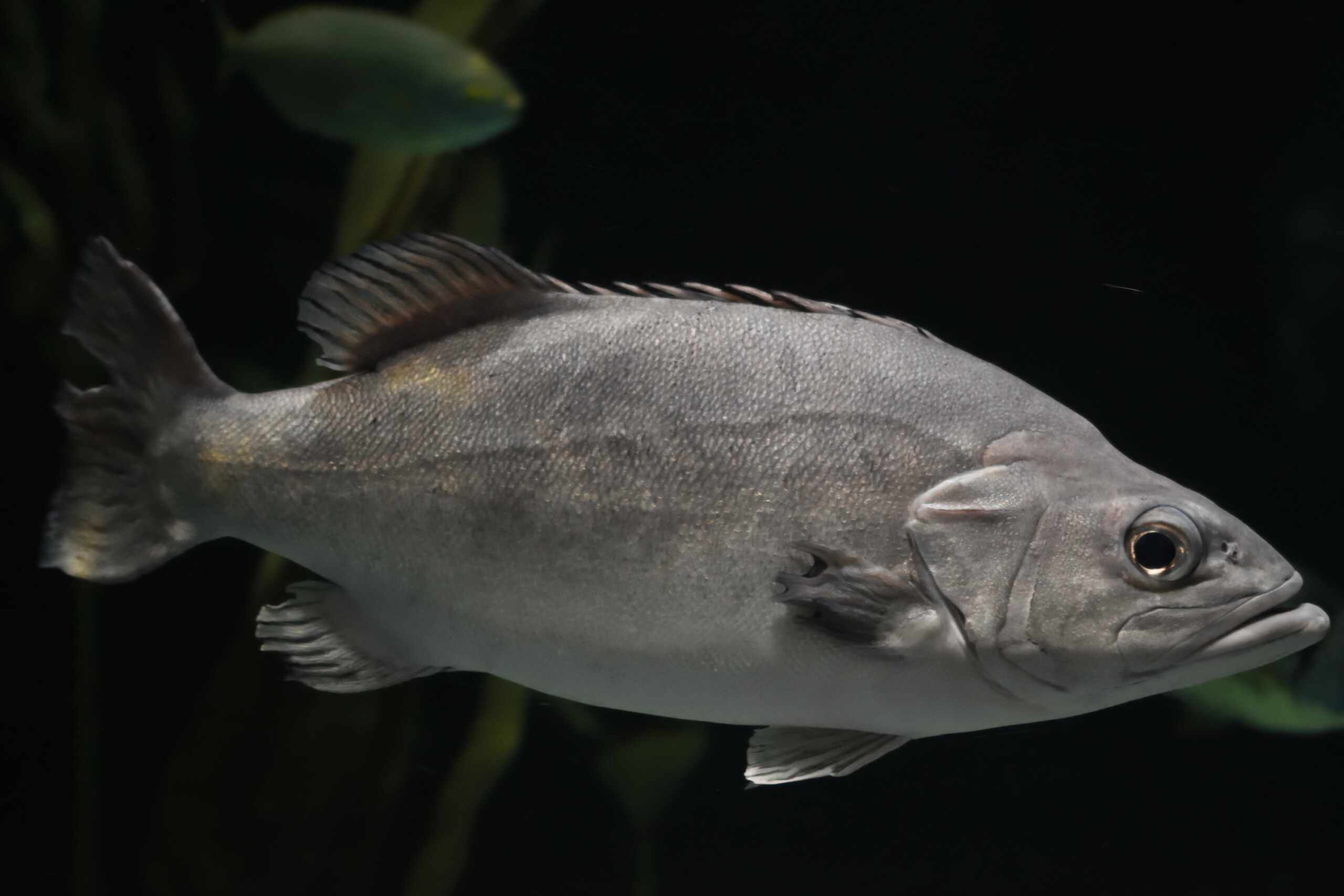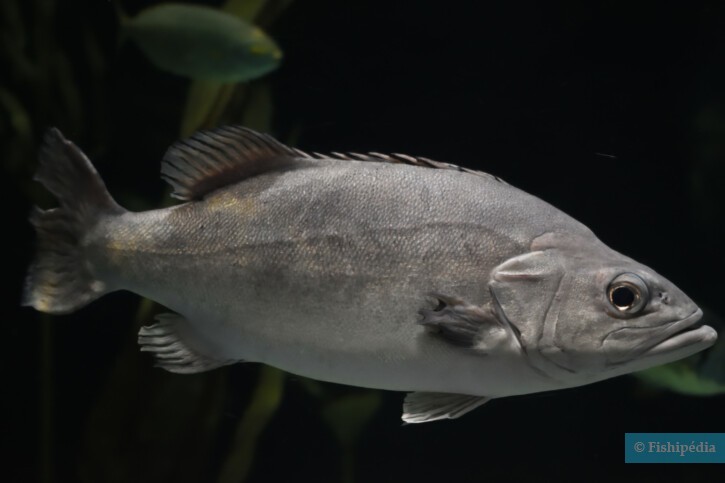wreckfish
| Scientific name | Polyprion americanus |
|---|---|
| Descriptor | Bloch & Schneider |
| Year of description | 1801 |
| IUCN category (World) | DD |
| Family | Polyprionidae |
| Genus | Polyprion |


Introduction
Polyprion americanus, commonly known as wreckfish in English and wreckfish in French, is a large demersal teleost that inhabits deep continental slopes and oceanic islands. This species is likely endangered, but information remains incomplete at the IUCN level to formalize this status.
Populations seem to be impacted at all stages of life by overfishing. Strict protection measures have been put in place in the United States and New Zealand, but it remains widely threatened over much of its range.
Who is it?
Morphology
-
Average size80 cm
-
Maximum size210 cm
-
Longevity80 year
-
ShapeOval
-
Average size80 cm
-
Maximum size210 cm
-
Longevity80 year
-
ShapeOval
How to recognize This fish ?
The wreckfish is a large fish, reaching up to 2 meters in length and weighing up to 100 kg. Its body is compressed, with a massive head and a large mouth. It has a blue-gray color on the back, lightening towards the belly with silvery reflections, and dark brown-black fins.
Juveniles have black spots on the head and body. The dorsal spines range from 10 to 12, the soft dorsal rays from 11 to 13, the anal spines number 3, and the soft anal rays from 8 to 10.
Sexual dimorphism
In American populations, fish over 100 cm in total length are predominantly females, which may indicate a difference in growth and longevity between the sexes.
Behaviour & Life cycle
-
dietcarnivorous
-
Sociabilitysolitary
-
territorialYes
-
Way of livingdiurnal
The wreckfish hunts by ambush and is a predator in its habitat. Opportunistic, it does not hesitate to attack any smaller animal within reach.
Juveniles are pelagic until reaching approximately 50 to 60 cm and often associate with floating algae and wrecks. They then become demersal, inhabiting depths ranging from 40 to 1000 meters. Adults prefer rocky habitats and underwater wrecks. They are generally solitary and feed on large crustaceans, cephalopods, and benthic fish. Juveniles mainly consume teleost fish.
Reproduction
-
Reproductionovipare
The wreckfish is a primary gonochorist, meaning individuals have separate sexes from birth. Spawning occurs from autumn to early winter (March to June), and adults reach maturity at sizes around 90 cm for females and 80 cm for males, at ages of 14 and 11 years respectively. Their life cycle is characterized by a long lifespan, slow growth, and late maturation, making the species vulnerable to overexploitation.
Harmless species
This species poses no particular danger to humans when encountered in its natural habitat.
Origin and distribution

Geographic distribution & Conservation
The wreckfish is widely distributed but discontinuously, with presence in temperate waters of the North and South Atlantic, the Mediterranean, and the Indian and Pacific Oceans. However, populations have experienced significant declines due to intensive fishing. In Brazil, commercial fishing began in 1973, reaching alarming levels with a 90% decrease in CPUE between 1989 and 1998. In Bermuda, catches dropped by 96% in just four years after longline introduction. The Azores and Madeira also showed significant declines in landings.
Conservation measures have been implemented in several regions, including moratoriums and fishing restrictions. In the United States, commercial fishing began in 1987 but was quickly regulated due to sustainability concerns. Despite these efforts, stocks remain fragile, and fishery management remains a challenge due to the slow reproduction and growth of the species.
Conservation status of populations (IUCN)
What is its habitat?
Natural environment characteristics
-
Temperature5 - 19 °C
-
Depth40 - 600 m
Biotope presentation
Wreckfish are most commonly found near deep continental slopes, oceanic islands, and seamounts, at depths ranging from 40 to 600 meters, sometimes 1000 meters, where temperatures vary from 6 to 16°C. Pelagic juveniles often associate with floating objects before descending to deeper demersal habitats as they mature. Adults mainly occupy rocky environments and wrecks, seeking cavities and complex structures for protection and feeding.
To go further
Sources & Contributions
Participation & Validation
The Fishipedia team and specialist contributors are committed to providing high-quality content. However, although the information comes from scientific sources or testimonials from specialists, the cards may contain inaccuracies.

Adrien Falzon

Benoit Chartrer
Translation
Translation done with the valuable contribution of our translators, who make this information available to a wider audience. We sincerely thank them for their commitment.
Bibliographic references
Exceptional longevity, slow growth and late maturation infer high inherent vulnerability to exploitation for bass groper Polyprion americanus (Teleostei: Polyprionidae) - Corey B. Wakefield - Stephen J. Newman - Dion K. Boddington - AQUATIC BIOLOGY - 2013. Vol. 18: 161–174, 2013 doi: 10.3354/ab00501
Scientific partners
Tags
#Polyprionidae
#Polyprion
#épave
#fonds rocheux
#zone mixte
#Tasman Sea
#Mediterranean Sea
#Mers d'Europe du Nord
#Mers d'Europe du Nord - Norvège
#Océan Atlantique Est Afrique - Bengala
#Temperate Eastern Atlantic Ocean
#Océan Atlantique Est Afrique - Transition & Cap Vert
#Cold temperate Northwest Atlantic Ocean
#Southwest warm temperate Atlantic Ocean
#Southwest Tropical Atlantic Ocean
#Canary Islands
#Madère












